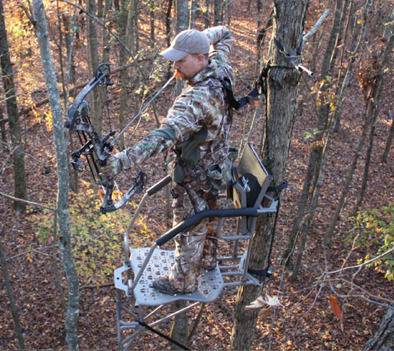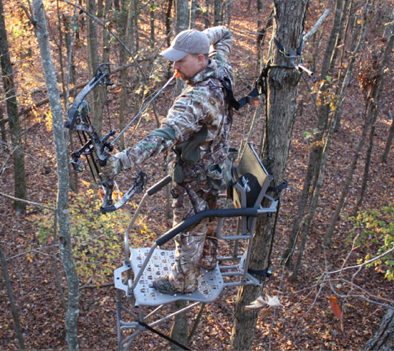 NEWPORT — Hunters are enthusiastic about Vermont’s upcoming October 4 – 26 and December 6 – 14 split archery deer hunting season.
NEWPORT — Hunters are enthusiastic about Vermont’s upcoming October 4 – 26 and December 6 – 14 split archery deer hunting season.
A hunter may take up to three deer in Vermont’s two-part archery season with three archery licenses. No more than one of the deer taken during archery season may be a legal buck. No antlerless deer may be taken in Wildlife Management Unit (WMUs) D2, E1 or E2, where antlerless deer hunting is prohibited in 2014.
In Vermont a hunter may take up to three deer in a calendar year in any combination of seasons (Archery, Youth Weekend, November Rifle Season, December Muzzleloader). Of these, only two may be legal bucks, and only one buck may be taken in each season. A “legal buck” is a deer with at least one antler having two or more points one inch or longer. All three deer in the annual bag limit may be antlerless deer.
In order to purchase an archery license, the hunter must show a certificate of satisfactorily completing a bow hunter education course, or show a previous or current bow hunting license from any state or Canadian province, or sign an affidavit that they have previously held an archery license.
Hunters must have a standard hunting license in order to purchase an add-on archery deer hunting license, except that nonresidents may purchase an “archery only deer license” costing just $75. Licenses may be quickly and easily purchased on Fish & Wildlife’s website www.vtfishandwildlife.com.
It is now legal to carry a pistol or revolver while bow hunting deer in the bow and arrow season. The pistol or revolver may not be used to take game or dispatch the deer. It is illegal to carry a rifle, shotgun or muzzleloader while bow hunting deer in the bow and arrow deer season.
A person shall not take any wild animal by shooting a firearm, muzzleloader, bow and arrow or crossbow while on or within 25 feet of the traveled portion of a public highway, except a public highway designated Class 4 on a town highway map. A person while on or within the traveled portion of a Class 4 public highway shall not take any wild animal by shooting a firearm, muzzleloader, bow and arrow, or crossbow.
Tree stands and ground blinds may only be built or used if the hunter has landowner permission. This includes portable as well as permanent stands and blinds. A hunter constructing or using a stand or blind must permanently mark his or her name and address on it so that it may be conveniently and easily read. Landowners are exempted from this requirement. On Vermont State Wildlife Management Areas, it is illegal to use nails, bolts or screws, including screw-in climbing steps, or wire, chain or other material that penetrates through the bark.
Because additional restrictions apply, hunters are urged to read the entire law governing the use of stands and blinds on page 21 of the “2014 Vermont Guide to Hunting, Fishing & Trapping,” available online and where licenses are sold.


